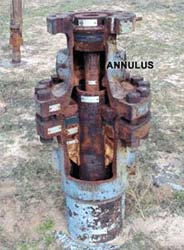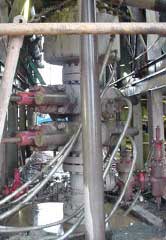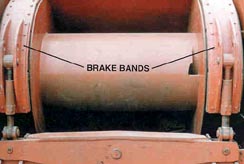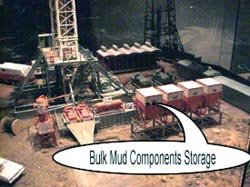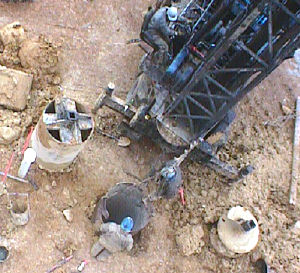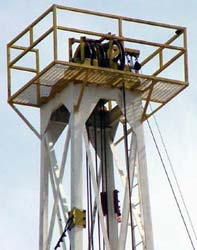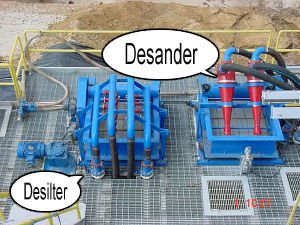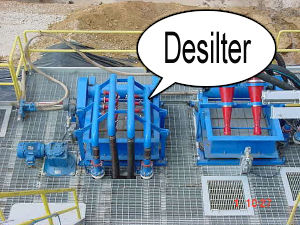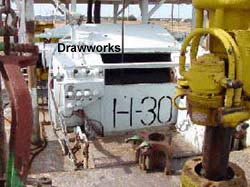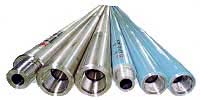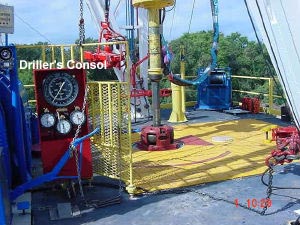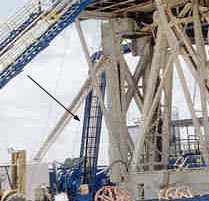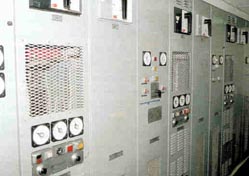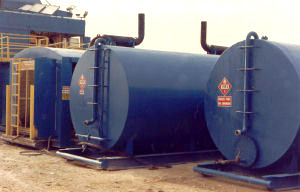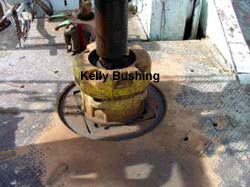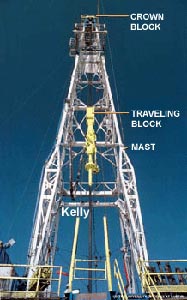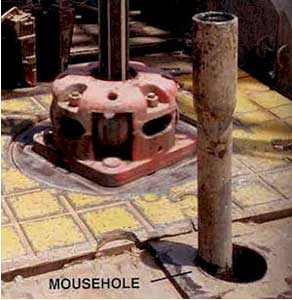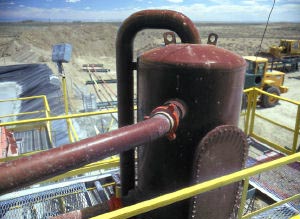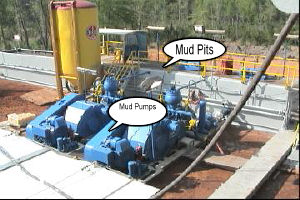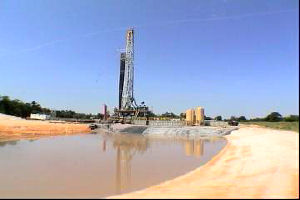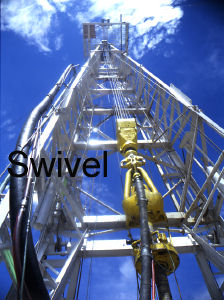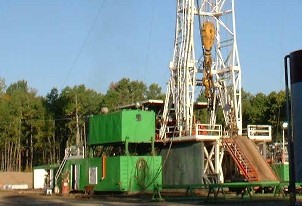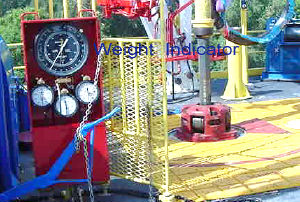Oil and Gas Well Drilling and Servicing eTool
Oil and Gas Well Drilling and Servicing » Glossary of Terms - H
† This is an abridged version of the Dictionary of Petroleum Terms provided by Petex and the University of Texas Austin. © Petex 2001
hang rods
v: to suspend sucker rods in a derrick or mast on rod hangers rather than to place them horizontally on a rack.
hard hat
n: a hard helmet worn by oilfield workers to minimize the danger of being injured by falling objects.
headache
n: (slang) the position in which the mast on a mobile rig is resting horizontally over the driver’s cab.
hex kelly
n: see kelly.
hoist
n: 1. an arrangement of pulleys and wire rope used for lifting heavy objects; a winch or similar device. 2. the drawworks. v: to raise or lift.
hoisting components
n pl: drawworks, drilling line, and traveling and crown blocks. Auxiliary hoisting components include catheads, catshaft, and air hoist.
hoisting drum
n: the large, flanged spool in the drawworks on which the hoisting cable is wound. See drawworks.

hoisting line
n: a wire rope used in hoisting operations.
hook
n: a large, hook-shaped device from which the elevator bails or the swivel is suspended. It turns on bearings in its supporting housing.
hoisting system
n: the system on the rig that performs all the lifting on the rig, primarily the lifting and lowering of drill pipe out of and into the hole. It is composed of drilling line, traveling block, crown block, and drawworks. See also hoisting components.

hook load
n: the weight of the drill stem and associated components that are suspended from the hook.
hopper
n: a large funnel- or cone-shaped device into which dry components (such as powdered clay or cement) can be poured to later mix with water or other liquids. The dry component is educted through a nozzle at the bottom of the hopper.
horsehead
n: the generally horsehead-shaped steel piece at the front of the beam of a pumping unit to which the bridle is attached in sucker rod pumping.
horsepower
n: a unit of measure of work done by a machine.
horizontal drilling
n: deviation of the borehole from vertical so that the borehole penetrates a productive formation in a manner parallel to the formation.
hydraulic
adj: 1. of or relating to water or other liquid in motion. 2. operated, moved, or effected by water or liquid.
hydraulic fluid
n: a liquid of low viscosity (such as light oil) that is used in systems actuated by liquid (such as the brake system in a car).
hydraulic force
n: force resulting from pressure on water or other hydraulic fluid.
hydraulic fracturing
n: an operation in which a specially blended liquid is pumped down a well and into a formation under pressure high enough to cause the formation to crack open, forming passages through which oil can flow into the wellbore.
hydraulic jar
n: a type of mechanical jar in which a fluid moving through a small opening slows the piston stroke while the crew stretches the work string. After the hydraulic delay, a release mechanism in the jar trips to allow a mandrel to spring up and deliver a sharp blow. Compare mechanical jar.
hydraulic pumping
n: a method of pumping oil from wells by using a downhole pump without sucker rods. Subsurface hydraulic pumps consist of two reciprocating pumps coupled and placed in the well. One pump functions as an engine and drives the other pump (the production pump). The downhole engine is usually operated by clean crude oil under under pressure (power oil) that is drawn from a power-oil settling tank by a triplex plunger pump on the surface. If a single string of tubing is used, power oil is pumped down the tubing string to the pump, which is seated in the string, and a mixture of power oil and produced fluid is returned through the casing-tubing annulus. If two parallel strings are used, one supplies power oil to the pump while the other returns the exhaust and produced oil to the surface. A hydraulic pump may be used to pump several wells from a central source.
hydrocarbons
n pl: organic compounds of hydrogen and carbon whose densities, boiling points, and freezing points increase as their molecular weights increase. Although composed of only two elements, hydrocarbons exist in a variety of compounds, because of the strong affinity of the carbon atom for other atoms and for itself. The smallest molecules of hydrocarbons are gaseous; the largest are solids. Petroleum is a mixture of many different hydrocarbons.
hydrogen sulfide cracking
n: a type of corrosion that occurs when metals are exposed to hydrogen sulfide gas; it is characterized by minute cracks that form just under the metal’s surface.
hydrostatic pressure
n: the force exerted by a body of fluid at rest. It increases directly with the density and the depth of the fluid and is expressed in many different units, including pounds per square inch or kilopascals.



